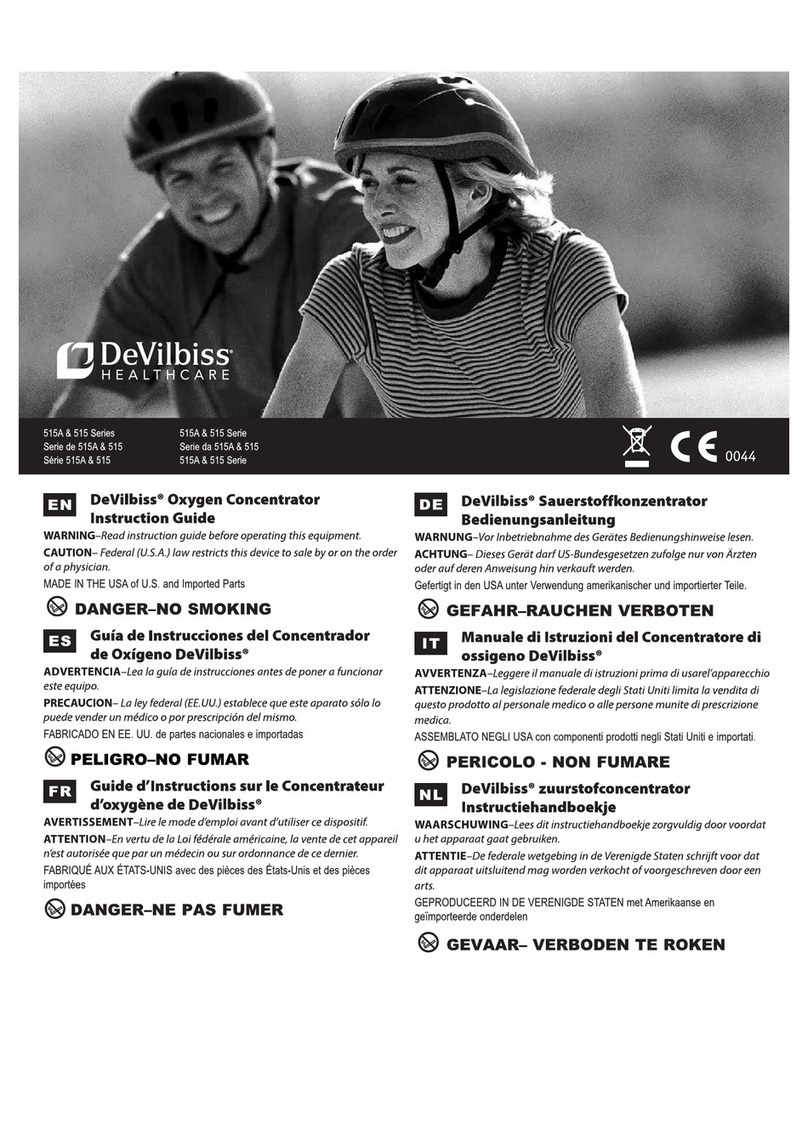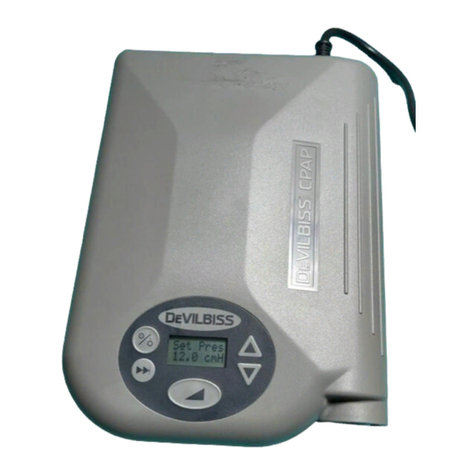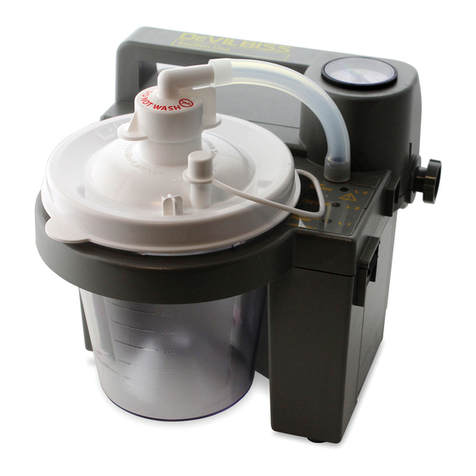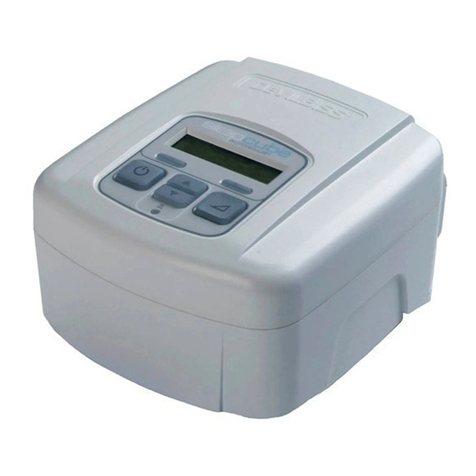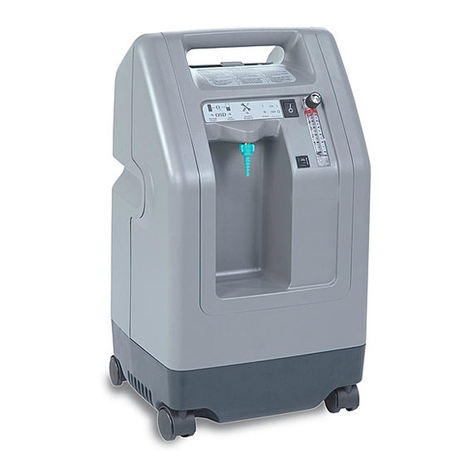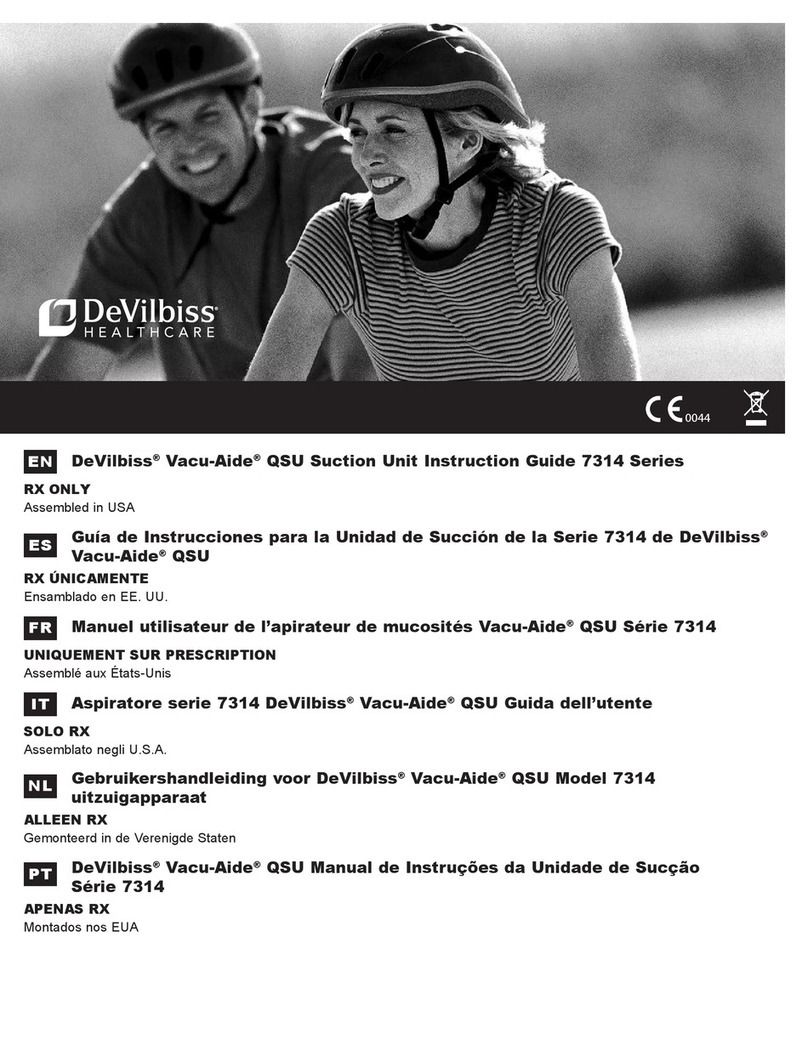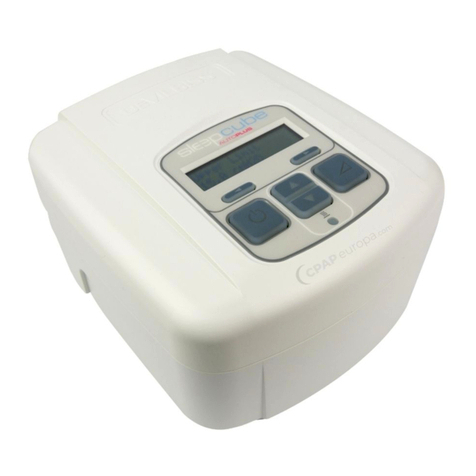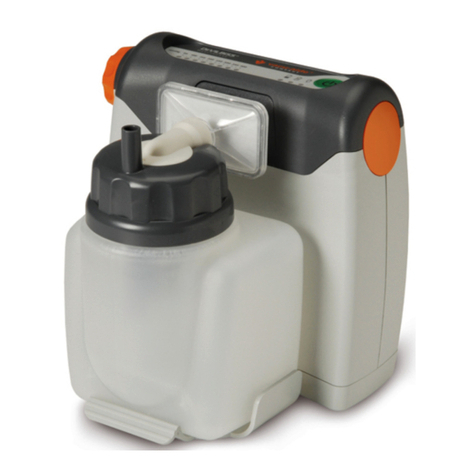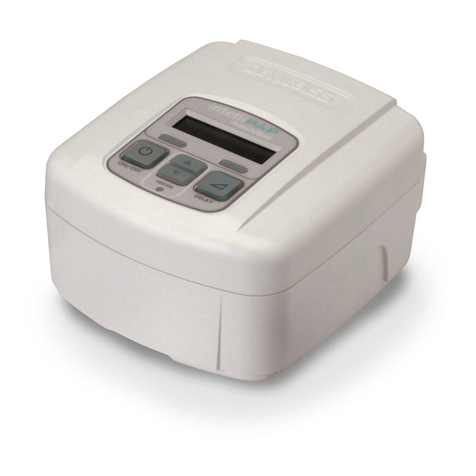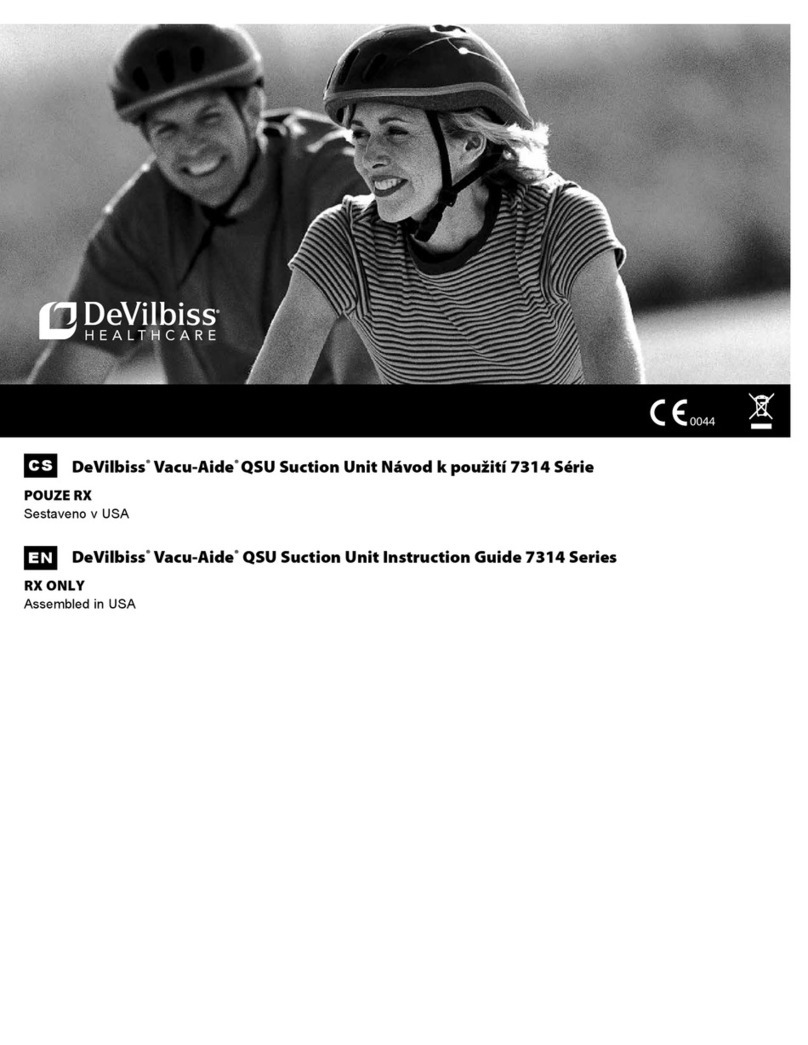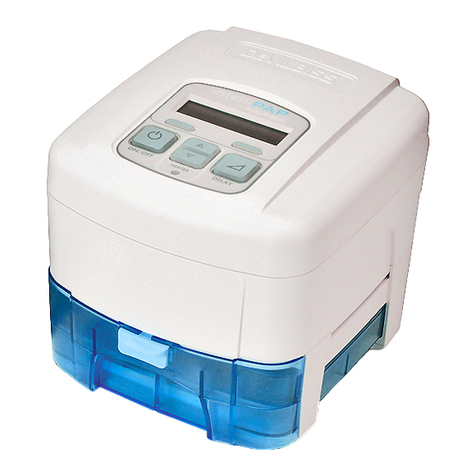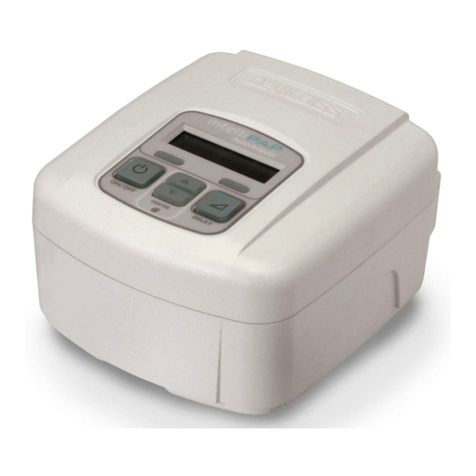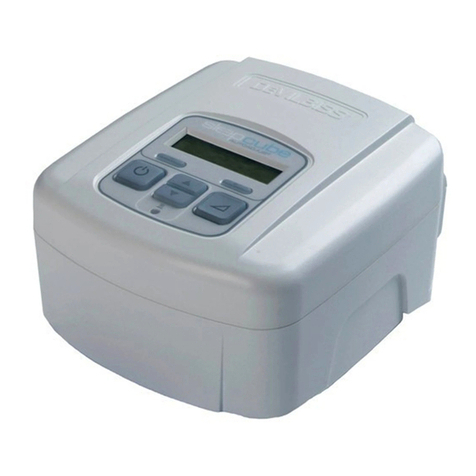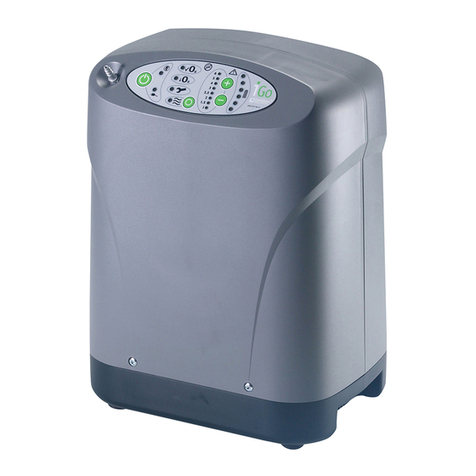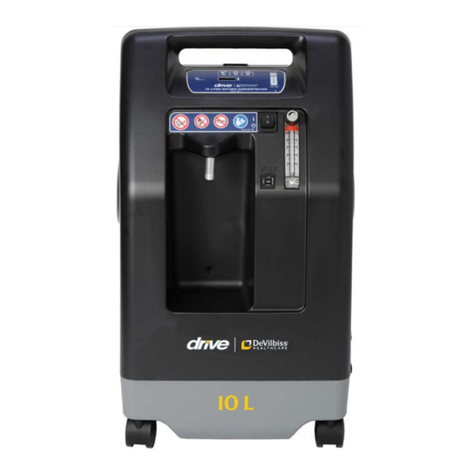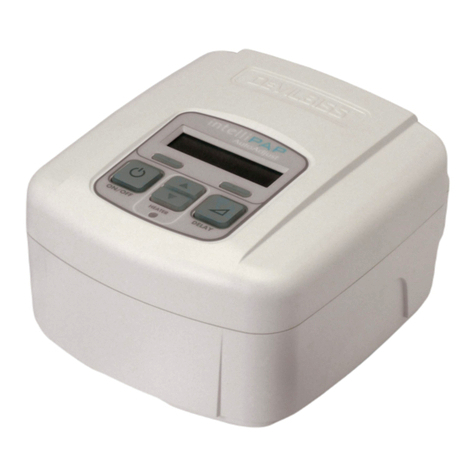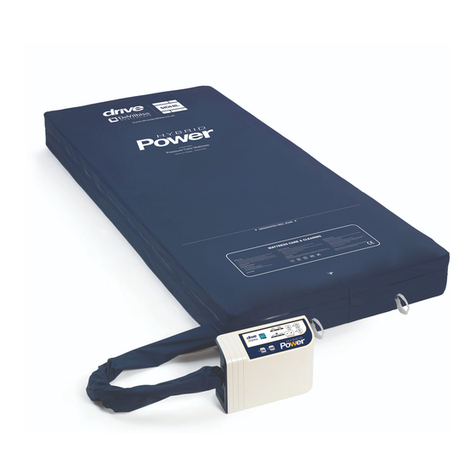3
LT-2 027
EN Tab le o f C o n te n ts
1. General Information ......................................... 4
A. Safeguards............................................................ 4
B. Initial Inspection ................................................... 4
C. T ravel ................................................................... 5
D. DC Power ........................................................... 5
E. Setting Pressures and Features ............................ 5
F. Images: DeVilbiss DV54 PAP................................. 5
2. Description of Normal Operation .................... 6
3. Cleaning and Disinfecting ................................. 7
A. R outine Cleaning--Patient .................................... 7
B. Disinfecting .......................................................... 7
4. Maintenance...................................................... 10
A. Initial Inspection—Equipment Provider .............. 10
B. R outine Maintenance—Patient ............................ 10
C. R equired 2-year Maintenance—
Equipment Provider ......................................... 10
5. Testing ............................................................... 11
A. Pressure Accuracy T est ........................................ 11
B. Flow Accuracy T est .............................................. 11
C. K eypad T est ......................................................... 12
D. Auto-ON / Auto-OFF T est.................................. 12
E. Backlight T est for LCD and K eypad ..................... 12
6. Alerts and Device Faults................................... 13
A. Alerts Visible to Patients ...................................... 13
B. Device Faults Visible to Patients ......................... 13
C. R eading and Clearing the Last Device Fault Code 13
7. Calibration......................................................... 14
A. Manual Calibration............................................... 14
B. Calibration Errors ................................................ 15
C. Auto-Calibration ................................................. 15
D. Details on T c Serial Command............................ 15
8. Troubleshooting ................................................ 16
9. Service Instructions .......................................... 18
A. Cover R emoval ................................................... 18
B. Cover R eplacement ............................................. 18
C. Control PC Board R emoval................................. 18
D. Control PC Board R eplacement.......................... 19
E. Power Supply Board R emoval.............................. 20
F. Power Supply Board R eplacement........................ 20
G. Blower R emoval .................................................. 21
H. Blower R eplacement ........................................... 21
I. K eyPad & LCD Display R emoval and R eplacement......... 22
J. Firmware installation............................................. 22
10. Unit Specifications ............................................ 23
11. General Information- DV5HH .......................... 24
A. Safeguards............................................................ 24
B. T ravel.................................................................... 24
C. DC Power ........................................................... 24
D. Product Description ............................................ 24
12. Description of Normal Operation- DV5HH..... 25
13. Maintenance and Testing- DV5HH................... 26
A. Cleaning and Disinfection .................................... 26
B. Maintenance......................................................... 26
C. T esting.................................................................. 26
14. Troubleshooting- DV5HH.................................. 27
15. Service Instructions- DV5HH........................... 28
A. R emoving the DV5HH base cover....................... 28
B. R eplacing the DV5HH base cover........................ 28
C. R emoving and replacing silicone manifold................ 29
D. R emoving and replacing the latch........................ 29
16. Unit Specifications- DV5HH............................. 30
17. Ordering and R eturning Parts.......................... 31
A. Ordering Non-W arranty R eplacement Parts ....... 31
B. Ordering W arranty R eplacement Parts ............... 31
C. R eturning W arranty Defective Parts .................... 31
D. Placing orders...................................................... 31
18. Parts List ........................................................... 32
19. W arranties......................................................... 33
